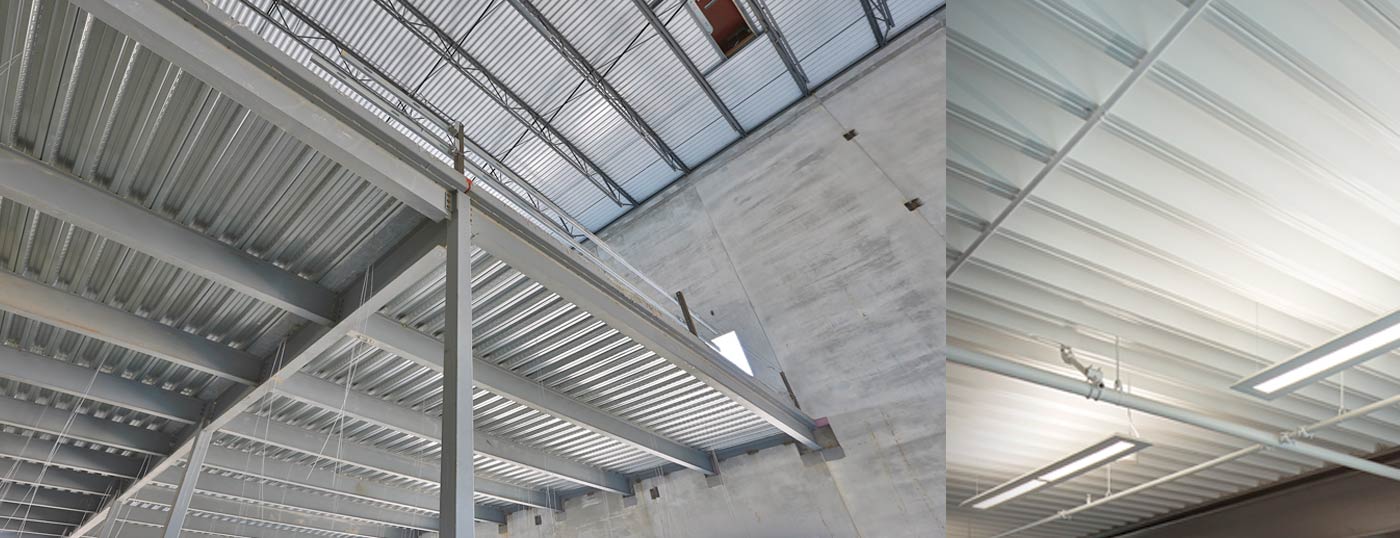
Sometimes the challenges facing the world spark a revolution in the way we go about our daily lives or accelerate the evolution of societal practices. One of the lasting legacies of the pandemic era will be its ability to alter how people interact, especially indoors. A particularly hard look will be taken at the design of multi-family or multi-story residential spaces—apartment complexes, dormitories, hotels, and the like.
With social distancing, work-from-home setups and efficient ventilation taking on added importance, multi-family design teams face new challenges. All the while, the traditional demands of the multi-story residential segment will continue to require attention.
Flexible, versatile, high-performing structural steel building systems are well-suited to address these emerging and existing challenges. Long-span roof and floor systems in particular answer the needs of those living in multi-family facilities as well as those building them.
The three projects outlined below illustrate how long-span steel roof and floor structures meet the needs of the multi-family segment. Also, don’t miss our Top 5 Guide to multi-family design.
In New York City, space is at a premium—indoors and outdoors. The project team behind a 12-story condominium building in New York City found a unique way to get the most out of a small plot of land.
Using a deep-ribbed long-span composite floor system, the building on the city’s Lower East Side features cantilevered floors to achieve greater square footage on the upper levels while adhering to strict zoning height limitations.

The 12-story condominium complex in New York City features cantilevered floors consisting of a deep-ribbed long-span composite deck system.
To maximize available space, the development at 100 Norfolk St. uses cantilevered floors to extend the building over a neighboring pawn shop after developers secured the air rights. The result is visually striking, with an all-glass façade augmenting the look.
The design cantilevers a minimum of 15 feet over the adjacent buildings and totals 50,000 square feet. The deep-ribbed profile of Deep-Dek® Composite made the cantilevered portion of the structure possible, reducing support sizing (steel beams, columns and lateral bracing).
“With span-to-depth ratios equaling those of traditional cast-in-place concrete and hollow-core plank, Deep-Dek Composite helps make steel frame solutions affordable and the design aspirations of architects possible,” says Marty Williams, design development manager for New Millennium Building Systems.
The long spans, enabled by Deep-Dek 4.5 Composite combined with light-density concrete, helped create open, unobstructed spaces that offer direct views of Downtown, Midtown and the Williamsburg Bridge.
Inside, a towering double-height lobby, an architectural wood wall and a fireplace greet guests. Residents, meanwhile, enjoy a state-of-the-art gym, roof deck and outdoor garden lounge.
The design team behind the Elan Heights multi-story residential facility in Houston, Texas, faced a design conundrum: How to achieve 20- to 25-foot unsupported interior spans without significantly increasing floor slab depths that would have increased building height and material costs. New Millennium recommended a dovetail long-span composite solution that met the space-saving design requirements and also offered cost-efficient fireproofing—all while accelerating the building’s erection.
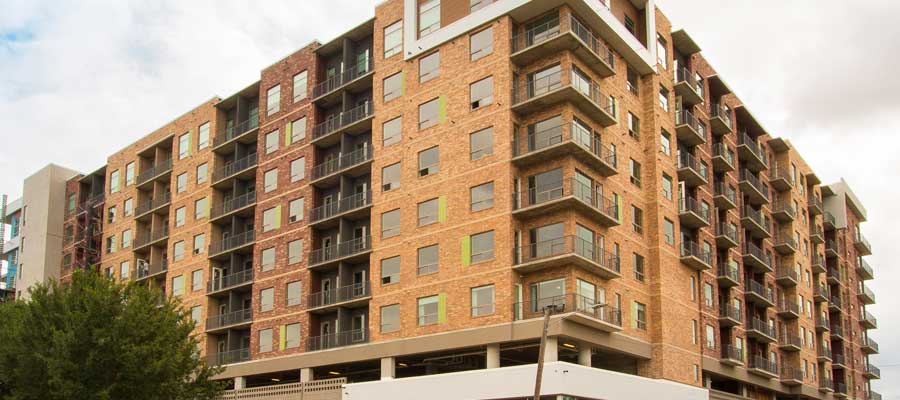
A dovetail long-span composite floor system creates unsupported spans of up to 28 feet wall-to-wall, enabling the Elan Heights multi-story residential building to feature spacious living interiors.
The Versa-Dek® Composite 2-inch steel deck profile created narrow floors that extend unsupported up to 28 feet wall-to-wall. The long spans combined with the shallow floor depth opened up interior spaces.
The project’s support structure uses 22-gauge, cold-formed steel, weight-bearing walls. With the walls and shoring in place, the floor panels were set, screwed onto the bearing walls, and the concrete was poured. All this was done ahead of schedule.
A particular benefit of the dovetail long-span composite floor system is the unique ability to stagger the placement of the dovetail sections to create barriers to the transmission of fire, smoke and sound. UL fire-endurance-rated for two hours, the decking met code without special drywall work or installation of fire-retardant material in the deck flutes.
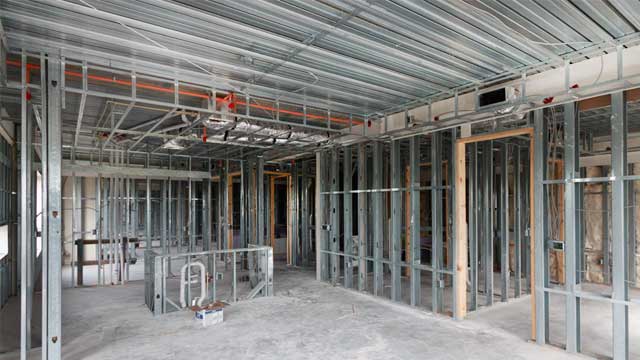

The dovetail composite floor system not only creates long spans but also shallow floors that maximize floor-to-ceiling heights.
It might defy logic, but a factory build in 1883 has become an innovative example of breakthrough multi-story residential design. An historic, 260,000-square-foot structure at 443 Greenwich St. in New York City’s famous Tribeca neighborhood also is the latest chapter in the history of the neighborhood’s flair for multi-story residential makeovers. Using a deep-ribbed long-span composite floor system, the project preserves the former bookbindery’s original exposed wood columns and beams while opening the design space to a degree not achievable using deeper, conventional floor structures.
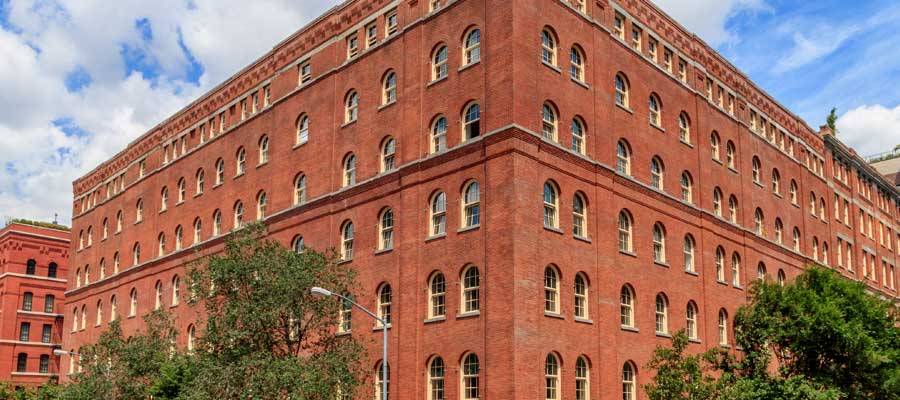
The shallow depths of the deep-ribbed composite floor system allowed the developer to preserve historic elements of this former warehouse in New York City that became a multi-story residential complex.
New York developer Metro-Loft, ODA Architects and GACE Consulting Engineers considered all options for the replacement of the seven-story building’s worn wooden floors. To achieve the vision of 53 luxury condominiums as large as 9,500 square feet and a building exemplary of the Tribeca community’s refined aesthetic, deep-ribbed long-span composite floors stood out for several reasons:
Shallow floors: The deep-ribbed composite system produces a floor slab 50 percent thinner than alternative floor systems. By virtue of the system’s unique composite strength, floors can span up to 36 feet without supporting columns. For this restoration, the space saved by the thin floor system enabled the integration of radiant heating into each floor while maintaining high ceilings.
Superior performance: Deep-ribbed long-span composite floors are known for low vibration and exceptional sound control. For this upscale, multi-story residential living complex, the system was tested and verified to meet International Building Code® requirements for sound transmission class and impact insulation class with a rating of 70.
Erection speed and safety: Just-in-time delivery was used during replacement of the sagging, century-old wood floor beams to avoid bracing of adjacent walls. Damage to the historic building was also prevented as the bundles of steel decking were crane-lifted through window openings of each floor. Workers carried the lightweight panels into position and installed the floors.
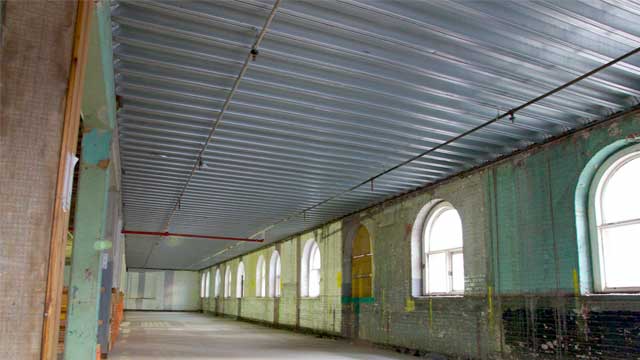
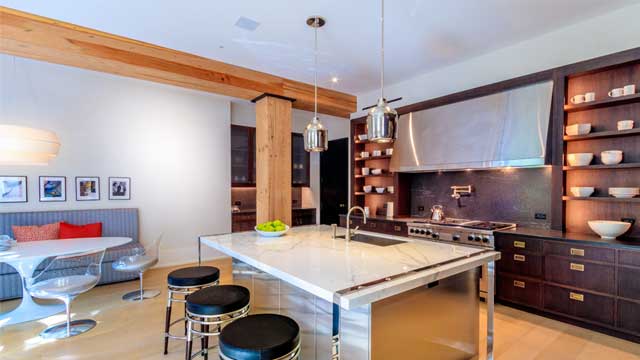
Once the factory floor of a bookbindery, the open spaces of these luxury condos feature restored original wood columns and beams. A long-span composite floor system enabled the open design while assuring low floor vibration and verified sound control.
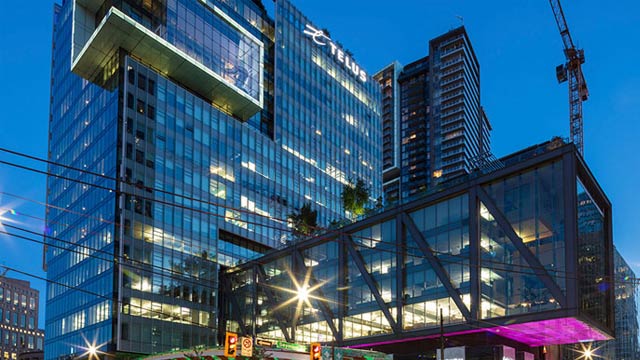
Long-span composite systems are engineered for the multi-story segment. They combine the speed and versatility of steel with the performance and durability of concrete while creating wide-open spaces uninterrupted by support columns. They enable cost and performance advantages.

Virtually connect with our education specialists and obtain professional training to build your steel building systems knowledge. You can earn career-advancing AIA LU/HSW or PDH credit as you learn career-enhancing skills.
Building a better steel experience